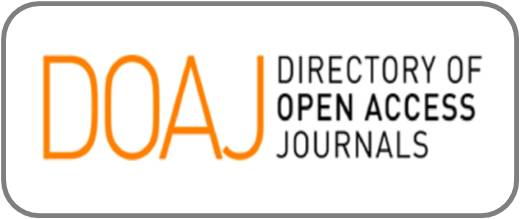A Qualitative Study on Talent Management Strategies in State-Owned Enterprises
DOI:
https://doi.org/10.47540/ijqr.v3i2.919Keywords:
Employee Commitment, Human Resource Management, State-Owned Enterprise, Talent ManagementAbstract
The purpose of the study is to identify the employee retention strategies currently used in state-owned enterprises and their effectiveness in retaining employees. State-owned enterprises (SOEs) are increasingly concerned about employee retention due to skills shortages and labor turnover, which affect productivity. This has prompted this study to examine the talent management strategies used by state-owned enterprises since salaries seem to be low and unable to attract a skilled workforce. The study used qualitative research, and semi-structured interviews were administered to obtain data from Human Resource practitioners and departmental supervisors in a South African state-owned enterprise. The study found that employee wellness, more leave days, employee development, and permanent contracts are the main retention strategies used to improve employee satisfaction in public sector organizations. This study highlights the relevance of talent management strategies in achieving competitive advantage in public sector organizations.
References
Braun, V. and Clarke, V. (2006). Using thematic analysis in psychology. Qualitative Research in Psychology. 3(2), 77-101.
Dobre, O. I. (2013). Employee motivation and organizational performance. Review of Applied Socio-Economic Research, 5(1), 53–60
Du Plooy-Cilliers, F., Davis, C. and Bezuidenhout, R. (2014). Research Matters. Juta. Cape Town.
Dutton, J. E. and Wrzeniewski, A. (2020). What job crafting looks like. Harvard Business Review
Festing M., Kornau, A. and Schäfer L. (2015). Think talent – think male? A comparative case study analysis of gender inclusion in talent management practices in the German media industry. International J Human Resource Management, 26.
Fugate, M., van der Heijden, B., De Vos, A., Forrier, A., & DeCuyper, N. (2021). Is what’s past prologue? A review and agenda for contemporary employability research. The Academy of Management Annals, 15, 266-298
Grobler, P., Bothma, R., Brewster, C., Carey, L., Holland, P. and Warnich, S. (2012). Contemporary issues in Human Resource Management. 4th edition. Oxford University Press Southern Africa. Cape Town.
Jia, J., Jiao, Y. and Han, H. (2021). Inclusive leadership and team creativity: A moderated mediation model of Chinese talent management. International Journal of Human Resource Management.
Jones, L.C. (2016). Mississippi missionaries’ workplace spirituality and organizational commitment (1698–1725): a case study. Journal of Management Spiritual Religion, 13, 324–44.
Kaliannan, M., Darmalinggam, D., Dorasamy, M. and Abraham, M. (2023). Inclusive talent development as a key talent management approach: A systematic literature review. Human Resource Management Review, 33.
Knies, E., Boselie, P., Gould-Williams, J. and Vandenabeele, W. (2015). Special issue of International Journal of Human Resource Management: Strategic human resource management and public sector performance. International Journal of Human Resource Management, 26(3), 421–424.
Latukha M. (2016). Talent management in emerging market firms: Global strategy and local challenges.
Liu, G., Rong, K. and Ko, W.W. (2018). Promoting employee entrepreneurial attitudes: an investigation of Chinese state-owned enterprises. The International Journal of Human Resource Management.
Mahdiyeh, M., Shiva, A., Mohammad, K., Akbar, A. and Shakib, Z. (2018). Linking Project Success and Strategic Talent Management: Satisfaction/Motivation and organisational commitment as mediators. Procedia Computer Science, 138, 764–774
Makarius, E.E., Dachner, A.M., Paluch, R.M. and Pedde, J. (2023). Feel the churn: Exercising talent management practices to support a climate for career mobility. Business Horizons.
Meyer, J.P. and Parfyonova, N.M. (2010). Normative commitment in the workplace: A theoretical analysis and re-conceptualization. Human Resource Management Rev, 20, 283–94.
Moza, A. S., Ogolla, D. A. and Mureithis. (2020). Relationship between talent management practices and organizational performance in Islamic banks in Kenya. International Journal of Research granthaalayah, 8(3), 98–114
Omotunde, O.I and Alegbeleye, G.O. (2021). Talent management practices and job performance of librarians in university libraries in Nigeria. The Journal of Academic Librarianship, 47
Paluch, R. M. (2022). Corporate alumni benchmarking report. Seattle, WA: PeoplePath
Russo, E., Moeller, M. and Liesch, P. (2021). Philosophies on talent management systems in Australian subsidiaries of foreign MNEs. International Journal of Human Resource Management.
SABPP: Setting HR Standards. (2016). Fact Sheet. Volume 6.
Salah, M. R. A. (2016). The impact of training and development on employees’ performance and productivity. ‘A case study of Jordanian private sector transportation companies located in Southern region of Jordan. A particular reference in made to the Governate of Maan’. International Journal of Management Sciences and Business Research, 5(7), 36–70
Saxen, N.K. and Das, N. (2021). 'Competitive pressure and the moderating role of the knowledge network on internationalisation intent of Indian state-owned enterprises', IIM Kozhikode Society & Management Review preprint, 1–15.
Schleicher, D. J. and Baumann, H. M. (2020). Performance management and the changing nature of work. The Cambridge Handbook of the Changing Nature of Work, 340- 363.
Schuler, R. S., Jackson, S. E. and Tarique, I. R. (2011). Framework for global talent management: HR actions for dealing with global talent challenges. In H. Scullion and D. G. Collings (Eds.). Global talent management. New York, NY: Routledge. 17-36.
Schuler, R.S., Jackson, S.E. and Tarique, I. (2011). Global Talent Management and Global Talent Challenges: Strategic Opportunities for IHRM. Journal of World Business, (46) 4, 506–516.
Sotiriadou, P., Brouwers, J. and Le, T. (2014). Choosing a qualitative data analysis tool: a comparison of NVivo and Leximancer. Annals of Leisure Research, 17(2), 218-234.
Thunnissen, M., Boselie, P. and Fruytier, B. (2013). Talent management and the relevance of context towards a pluralistic approach. Human Resource Management Review, 23 (4), 326–336
Xiao, Q. and Cooke, F.L. (2020). Towards a hybrid model? A systematic review of human resource management research on Chinese state-owned enterprises (1993–2017), The International Journal of Human Resource Management, 31(1), 47-89.
Published
How to Cite
Issue
Section
Copyright (c) 2023 Arvid Muzanenhamo, Edward Malatse Rankhumise

This work is licensed under a Creative Commons Attribution-ShareAlike 4.0 International License.

















